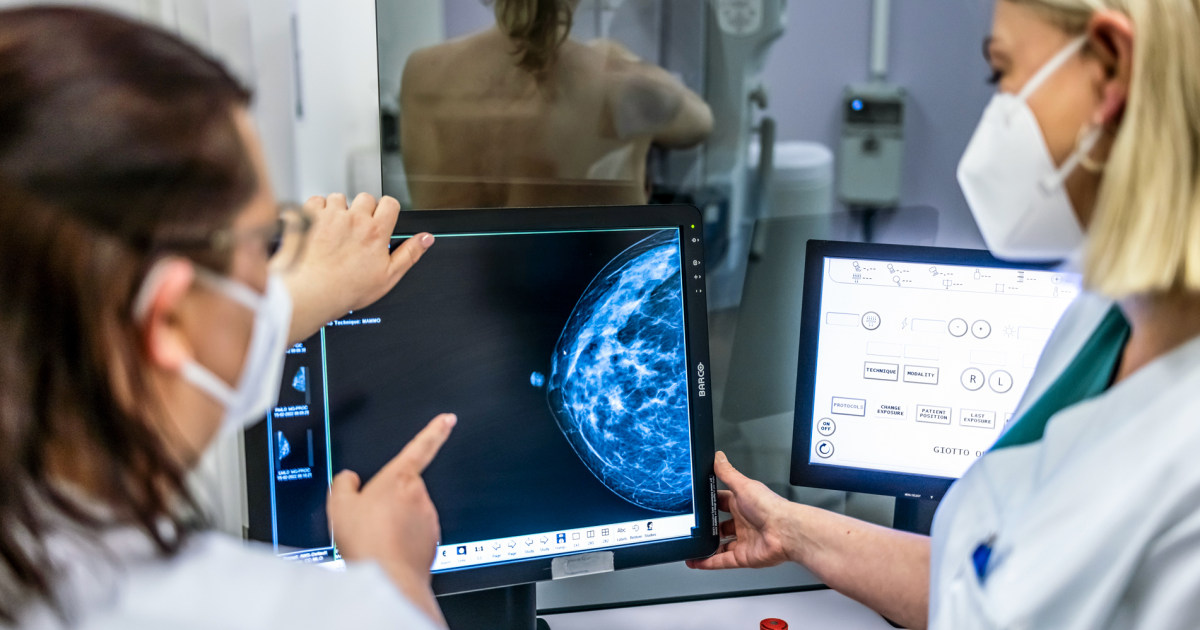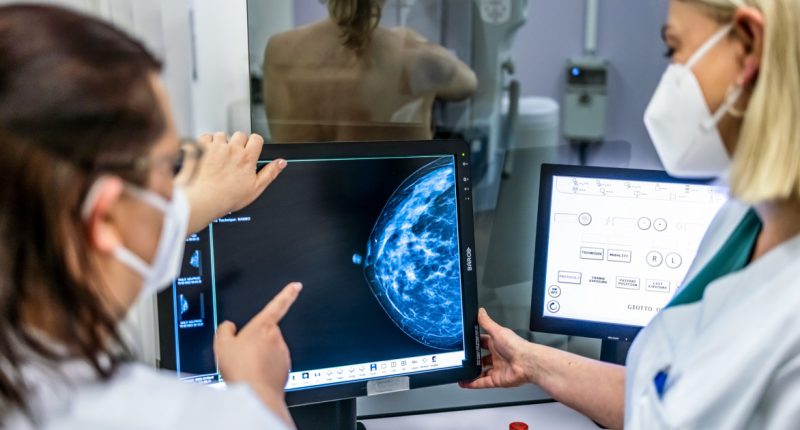
Women should get a mammogram every other year starting at age 40, according to new guidance issued Tuesday by the U.S. Preventive Services Task Force.
It’s a considerable drop in age from the prior recommendations, which said women should start getting biennial screenings no later than age 50 and suggested that women in their 40s could talk to their doctor about getting screened.
The change, first released as a draft last year, is a response to rising cancer rates among women in their 40s, as well as evidence that earlier mammograms help save lives. The rate of breast cancer among women ages 40 to 49 increased 2% per year, on average, from 2015 to 2019, according to the National Cancer Institute.
“With this increasing incidence of breast cancer in women in their 40s, that points to mammography being even more beneficial,” said Dr. Wanda Nicholson, the chair of the task force.
The group, an independent panel of experts, estimated that its new recommendations — which were published Tuesday in the journal JAMA — could save up to 20% more lives relative to the old guidance.
Insurance companies often follow the task force’s recommendations when determining coverage and reimbursements, but many plans already cover mammograms for women starting at age 40.
Primary care doctors or obstetrician-gynecologists order mammograms — X-ray images of the breast — for their patients, and the service is typically provided by a technician at an imaging center or radiology department. Patients place each breast between two plates, then a machine takes X-ray images of their breast tissue.
If abnormal lesions are found in the scans, patients may need additional mammograms, an ultrasound or sometimes a biopsy or MRI to determine if cancer is present.
The task force’s new guidelines do not apply to women with a personal history of breast cancer, those who’ve had an abnormality on a previous biopsy or those with a genetic marker for breast cancer — those groups may need to be screened earlier and more frequently.
The recommendations also only apply to women up to age 74.
Some leading medical groups said the task force’s new guidance still does not go far enough.
The American Cancer Society recommends annual screenings — rather than every other year — for women ages 45 to 54, with the option to switch to biennial screenings once they turn 55. It does not recommend that women stop screenings at a certain age, as long as they are expected to live at least 10 more years.
“We are disappointed that the updated USPSTF screening recommendations do not include women over the age of 74,” the ACS said in a statement. “Millions of women over age 75 are in very good health and are expected to live many more years during which their risk of breast cancer remains high.”
But Nicholson said there wasn’t enough evidence for the task force to recommend mammograms to women ages 75 and up.
“We want to reassure people that we have not forgotten women who are 75 years of age and older,” she said. “We are urgently calling for more research for this population.”
The American College of Radiology, meanwhile, expressed disappointment that the task force did not suggest yearly screenings starting at age 40, as the college recommends.
The ACR also suggests that all women — especially Black and Jewish women — talk with their doctors about their breast cancer risk before their 25th birthday. Black women are 40% more likely than white women to die from breast cancer, and Jewish women of Eastern European descent have a higher-than-average risk of breast cancer.
However, the task force’s analysis found that getting scans every year can yield more false positive results, which can lead to unnecessary biopsies or women receiving treatment for lesions that don’t necessarily pose a health risk.
“Screening every other year compared to every year had a much more favorable balance of benefits and harms,” Nicholson said.
Dr. Phoebe Freer, chief of breast imaging at the University of Utah’s Huntsman Cancer Institute, said many women would prefer to get screened annually nonetheless.
“Usually, the risk is just being called back for extra pictures — maybe an ultrasound and after that being told that the woman’s fine and she can go back to routine screening. Most women are willing to tolerate that risk for that extra mortality reduction,” she said.
The ACR also recommends an additional MRI each year for women with dense breasts, which is associated with an increased risk of breast cancer. But the task force said it needed more research before suggesting that for women with more dense breast tissue.
“It possible that additional imaging could help them to live healthier, longer lives? The bottom line is that, with our current review, that evidence is just not there,” Nicholson said.
Source: | This article originally belongs to Nbcnews.com










